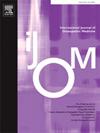Development of standardized osteopathic manipulative treatment tracking forms recording pain and functional outcomes to facilitate osteopathic research
IF 1.5
4区 医学
Q2 MEDICINE, GENERAL & INTERNAL
引用次数: 0
Abstract
Objectives
Osteopathic physicians are well positioned to provide needed non-pharmacological pain management using osteopathic manipulative treatment (OMT) in the holistic treatment of pain. Reflecting on years of often ineffective and potentially harmful traditional pharmacological management of musculoskeletal (MSK) pain, OMT as an alternative method is underutilized and under-recognized option. There is a need for standardized data collection to support the use of OMT as an evidence-based complement to pain management. This project developed efficient and standardized intake and follow-up forms to assess short and long term OMT treatment outcomes.
Methods
Addressing the need, standardized, mineable research instruments that capture the specifics of patient presentation, clinical findings, treatment modalities including outcomes for OMT pain management were created. Including background health information, the intake includes active medications, quantitating analgesics, pain location charts, pain severity/location (ICD) 10th revision diagnostic codes (ICD-11 codes unavailable in US), functional capacity score/location, and OMT implemented/body location. Follow-up form documents prior treatments outcome, pain, and functional status outcome scores, quantitates analgesics.
Results
Forms are open access for general use, without restriction, tracking effectiveness of OMT for pain management and encourages development of an international database.
Conclusion
Developing these OMT intake and follow-up forms creates clinically useable and research mineable instruments for documentation of OMT procedures and outcomes in the overall treatment of MSK pain. OMT will gain better worldwide recognition as a validated alternative to pharmacologic treatments.
开发标准化的整骨手法治疗跟踪表格,记录疼痛和功能结果,以促进整骨疗法研究
目的整骨疗法医师能够在疼痛的整体治疗中使用整骨手法治疗(OMT)提供所需的非药物疼痛管理。考虑到多年来肌肉骨骼(MSK)疼痛的传统药理学治疗往往无效且可能有害,OMT作为一种替代方法未得到充分利用和认可。需要标准化的数据收集,以支持使用OMT作为疼痛管理的循证补充。该项目制定了有效和标准化的摄入和随访表格,以评估短期和长期OMT治疗结果。方法:为了满足需求,我们创建了标准化的、可挖掘的研究工具,以捕捉患者的具体表现、临床发现、治疗方式,包括OMT疼痛管理的结果。包括背景健康信息,摄入包括活性药物、定量镇痛药、疼痛定位图、疼痛严重程度/位置(ICD)第10版诊断代码(ICD-11代码在美国不可用)、功能能力评分/位置和实施的OMT /身体位置。随访表记录了之前的治疗结果,疼痛和功能状态结果评分,量化镇痛药。结果表格开放供一般使用,不受限制,追踪OMT治疗疼痛的有效性,并鼓励建立国际数据库。结论:制定这些OMT的摄入和随访表格,为记录OMT的过程和MSK疼痛的整体治疗结果创造了临床可用和可研究的工具。作为一种有效的替代药物治疗方法,OMT将在世界范围内获得更好的认可。
本文章由计算机程序翻译,如有差异,请以英文原文为准。
求助全文
约1分钟内获得全文
求助全文
来源期刊
CiteScore
2.20
自引率
36.80%
发文量
42
审稿时长
3 months
期刊介绍:
The International Journal of Osteopathic Medicine is a peer-reviewed journal that provides for the publication of high quality research articles and review papers that are as broad as the many disciplines that influence and underpin the principles and practice of osteopathic medicine. Particular emphasis is given to basic science research, clinical epidemiology and health social science in relation to osteopathy and neuromusculoskeletal medicine.
The Editorial Board encourages submission of articles based on both quantitative and qualitative research designs. The Editorial Board also aims to provide a forum for discourse and debate on any aspect of osteopathy and neuromusculoskeletal medicine with the aim of critically evaluating existing practices in regard to the diagnosis, treatment and management of patients with neuromusculoskeletal disorders and somatic dysfunction. All manuscripts submitted to the IJOM are subject to a blinded review process. The categories currently available for publication include reports of original research, review papers, commentaries and articles related to clinical practice, including case reports. Further details can be found in the IJOM Instructions for Authors. Manuscripts are accepted for publication with the understanding that no substantial part has been, or will be published elsewhere.

 求助内容:
求助内容: 应助结果提醒方式:
应助结果提醒方式:


